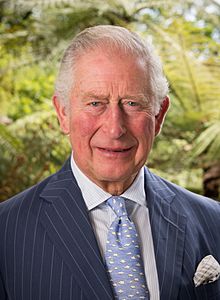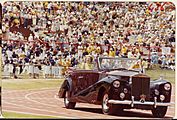Head of the Commonwealth facts for kids
Quick facts for kids Head of the Commonwealth |
|
|---|---|
| Commonwealth of Nations | |
| Seat | Marlborough House, London |
| Appointer | Commonwealth heads of government |
| Term length | Life tenure |
| Inaugural holder | George VI |
| Formation | 28 April 1949 |
| Website | thecommonwealth.org |
The Head of the Commonwealth is a special leader who represents the Commonwealth of Nations. This group is made up of 56 independent countries that work together. The Head of the Commonwealth is a "ceremonial leader," which means they have an important symbolic role, but they don't have real political power over any of the member countries.
There's no time limit for how long someone can be the Head of the Commonwealth. The current Head is King Charles III. He took on this role on September 8, 2022.
Contents
How the Head of the Commonwealth Role Began
By 1949, the group of countries was called the British Commonwealth. King George VI was the monarch for eight of these countries. However, India wanted to become a republic, meaning it would have its own elected head of state instead of a king. But India still wanted to stay part of the Commonwealth.
To make this possible, the title "Head of the Commonwealth" was created for the King. India became a republic in 1950 and recognized the King in this new role. Later, other countries like Pakistan, Sri Lanka, Ghana, and Singapore also became republics. They still remained members of the Commonwealth and recognized Queen Elizabeth II as its Head.
At a big meeting in 2018, it was decided that King Charles III would become the Head of the Commonwealth after Queen Elizabeth II. He took on this role when she passed away on September 8, 2022.
Early Days of the Commonwealth
In the late 1800s and early 1900s, the British Empire started to be called the Commonwealth of Nations. Many colonies gained more control over their own affairs, becoming "Dominions." The idea was that these countries were united by their shared loyalty to the British monarch.
There was a time when Ireland wanted to be a republic but still be connected to the British Commonwealth. They suggested their president could recognize the British monarch as the "head of the Association." This idea was not fully accepted at the time. Ireland remained a Dominion for a while.
In 1926 and 1931, new rules made it clear that Dominions were equal and could make their own laws. This meant that when King Edward VIII gave up his throne, each Dominion had to agree to his brother, George VI, becoming king.
Ireland later changed its laws to have an elected President of Ireland. This meant the King had only a small, symbolic role in Ireland's foreign relations. Ireland eventually passed a law in 1948 that made it a full republic and ended its membership in the Commonwealth in 1949.
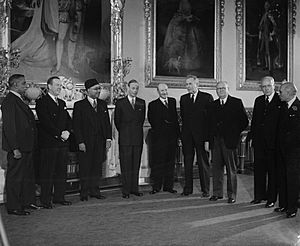
India's Decision and the London Declaration
After Ireland left, King George VI was still king of the United Kingdom, Canada, Australia, New Zealand, South Africa, India, Pakistan, and Ceylon (now Sri Lanka). But India also wanted to become a republic, just like Ireland, but they wanted to stay in the Commonwealth.
To solve this, the London Declaration was made in April 1949. It said that India wanted to remain part of the Commonwealth. It also stated that India saw the King as the symbol of the Commonwealth's voluntary group of countries, and "as such the Head of the Commonwealth." This important agreement allowed India and other nations to become republics without leaving the Commonwealth family.
When India adopted its own republican constitution on January 26, 1950, George VI stopped being its monarch. From then on, India recognized him as the Head of the Commonwealth.
Queen Elizabeth II's Time as Head
King George VI's daughter, Elizabeth II, became Head of the Commonwealth when she became Queen on February 6, 1952. She said that the Commonwealth was "an entirely new conception built on the highest qualities of the spirit of man: friendship, loyalty, and the desire for freedom and peace."
The next year, a special law was passed in many Commonwealth countries. For the first time, it added "Head of the Commonwealth" to the monarch's official titles.
In 1960, Queen Elizabeth II even had a special personal flag created. This flag showed her role as Head of the Commonwealth, separate from her role as queen of any specific country. This flag was used when she visited Commonwealth countries where she wasn't the head of state. It was also raised at the Commonwealth Secretariat headquarters in London.
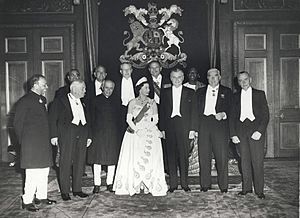
South Africa and the Commonwealth
South Africa was not allowed to rejoin the Commonwealth after it became a republic in 1961. Many Commonwealth members, especially those in Africa and Asia, did not like South Africa's policy of racial apartheid.
During the 1980s, Queen Elizabeth II agreed with most Commonwealth leaders about putting economic pressure on South Africa to end apartheid. She stood firm on this issue, even when her own British Prime Minister, Margaret Thatcher, disagreed. South Africa was welcomed back into the Commonwealth in 1994 after its first fair elections.
The Queen never spoke publicly about apartheid. However, in 1961, she was photographed dancing with the President of Ghana, Kwame Nkrumah. This happened during her visit to Accra, celebrating Ghana becoming a republic within the Commonwealth. Many saw this as a symbolic sign of her anti-apartheid views.
King Charles III as Head
After Queen Elizabeth II passed away on September 8, 2022, King Charles III became the Head of the Commonwealth. He gave his first Commonwealth Day message on March 13, 2023. In his message, he spoke about the Commonwealth's values: "peace and justice; tolerance, respect, and solidarity; care for our environment and for the most vulnerable among us."
What the Head of the Commonwealth Does
The Head of the Commonwealth works alongside the Commonwealth secretary-general and the Commonwealth chair-in-office. Even though King Charles III is king of 15 Commonwealth countries, his role as Head of the Commonwealth doesn't give him any special power in those countries. He stays updated on Commonwealth news by talking regularly with the Commonwealth secretary-general and the Secretariat, which is the main office of the Commonwealth.
Attending Important Meetings
The Head of the Commonwealth, or someone representing them, attends the Commonwealth Heads of Government Meeting (CHOGM). This big meeting happens every two years in different Commonwealth countries. Queen Elizabeth II started this tradition in 1973.
During the CHOGM, the Head of the Commonwealth has private meetings with leaders from other Commonwealth countries. They also attend receptions and dinners and give a speech.
The Head of the Commonwealth or their representative is also present at the Commonwealth Games, which happen every four years. Before the Games start, there's a "Queen's Baton Relay." This relay carries a special message from the Head of the Commonwealth to all the Commonwealth nations and territories.
Commonwealth Day Message
Every year on Commonwealth Day, which is the second Monday in March, the Head of the Commonwealth sends a special message to all the people of the Commonwealth. This message reaches about 2.5 billion people! On the same day, the Head attends a special service at Westminster Abbey.
How the Next Head is Chosen
The job of Head of the Commonwealth is not automatically passed down from parent to child. Instead, the leaders of the Commonwealth countries choose the next Head. Once someone is chosen, there is no limit to how long they can serve.
Even though it's not hereditary, the words "Head of the Commonwealth" are part of the monarch's full title in many Commonwealth countries. Before Charles was chosen, leaders like Canada's Prime Minister Stephen Harper and New Zealand's Prime Minister John Key suggested that the title should simply go to the monarch.
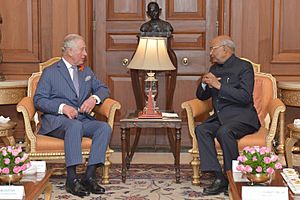
By 2018, Queen Elizabeth II was in her 90s, and people were talking about who would be the next Head of the Commonwealth. Some wondered if it should be her eldest son, Charles, or someone else. There were ideas about whether the monarch should automatically become Head, or if the role should be elected.
Some people thought the role should end when Queen Elizabeth died. They felt that Prince Charles becoming Head might make the Commonwealth seem old-fashioned.
However, at the 2018 CHOGM meeting, the leaders officially announced that Charles would be the next Head of the Commonwealth. They confirmed that the role is not hereditary. So, when Queen Elizabeth died on September 8, 2022, Charles automatically became the Head of the Commonwealth.
List of Heads of the Commonwealth
| No. | Portrait | Name | Term | ||
|---|---|---|---|---|---|
| Start | End | Duration | |||
| 1 | 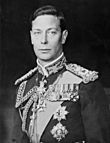 |
George VI (1895–1952) |
26/28 April 1949 | 6 February 1952 | 2 years, 286 days |
| 2 | 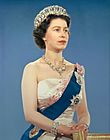 |
Elizabeth II (1926–2022) |
6 February 1952 | 8 September 2022 | 70 years, 214 days |
| 3 | 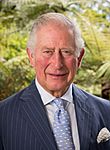 |
Charles III (born 1948) |
8 September 2022 | Incumbent | 3 years, 129 days |
See also
- Timeline of the Commonwealth of Nations
- List of titles and honours of George VI
- List of titles and honours of Elizabeth II
- List of titles and honours of Charles III
- Style of the British sovereign
- Title and style of the Canadian monarch


